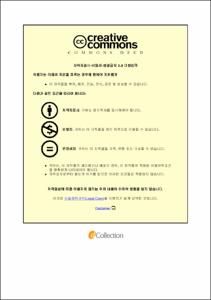The Challenges of Managing Artisanal Fisheries in Ghana
- Alternative Title
- 가나의 소규모어업관리의 개선방안연구
- Abstract
- Artisanal fishery plays an important role in Ghanaian fishing industry contributing about 74% of total marine production. Managing this fishery has some identified challenges related to its open access nature and weak institutional structures to enforce management regimes enacted in the laws and regulations. The objective of the study was to assess the effectiveness of current management systems for the sustainability of the fishery. The analysis was done with the application of the surplus production model (Gordon Schaefer, Walters, and Hilborn (WH), Schnute, Fox and Clarke Yoshimoto Pooley (CY&P), using the Ordinary Least Square (OLS) Linear regression with STATA and Microsoft Excel, were applied to determine the biological parameters using catch and effort data from 2000 to 2016 to assess their applicability. The Clarke, Yoshimoto Pooley (CY&P) model estimates a Maximum Sustainable Yield (MSY) of 251,806.69 tons and a corresponding effort of 6718.92 suggesting overcapacity in the current effort level. It is necessary for collaboration between traditional authorities and government agency to merge traditional and formal management systems into current laws and regulations to gradually modernize the management strategies implemented in the fishery.
- Issued Date
- 2019
- Awarded Date
- 2019. 2
- Type
- Dissertation
- Publisher
- 부경대학교
- Affiliation
- 부경대학교 글로벌수산대학원
- Department
- 글로벌수산대학원 국제수산과학협동과정
- Advisor
- Pyo Heedong
- Table Of Contents
- 1. Introduction 1
1.1. Significance and Justification of the Study 2
1.2. Problem Statement 3
1.3. Organization of the Study 4
2. Literature Review 5
2.1. Fishery Industry in Ghana 5
2.2. The Marine Fisheries Sector in Ghana 6
2.3. Status of the Fisheries 10
2.4. Fisheries Management in Ghana 13
2.4.1. Challenges of the sector 17
3. Material and Methods 18
3.1. Catch and Effort data 18
3.2. Methods 22
3.2.1. Data formulation 22
3.2.2. Maximum Sustainable Yield (MSY) 23
3.2.3. Exponential growth model: 23
3.2.4. Determining Model’s Accuracy 24
4. Results and Discussion 25
5. Conclusion and Recommendation 34
- Degree
- Master
- Appears in Collections:
- 글로벌수산대학원 > 국제수산과학협동과정
- Files in This Item:
-
-
Download
 The Challenges of Managing Artisanal Fisheries in Ghana.pdf
기타 데이터 / 797.47 kB / Adobe PDF
The Challenges of Managing Artisanal Fisheries in Ghana.pdf
기타 데이터 / 797.47 kB / Adobe PDF
-
Items in Repository are protected by copyright, with all rights reserved, unless otherwise indicated.